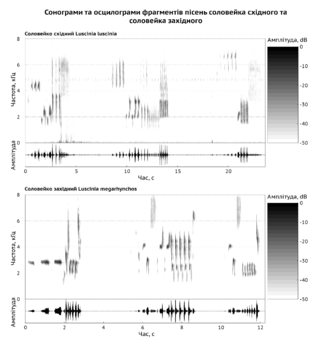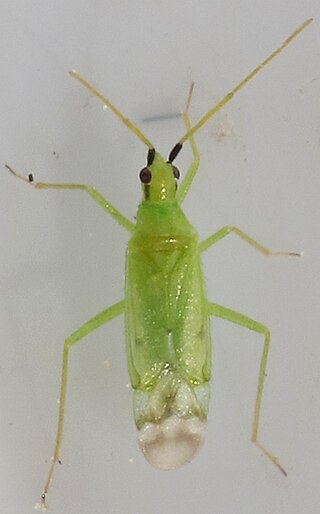
Acoustics is a branch of physics that deals with the study of mechanical waves in gases, liquids, and solids including topics such as vibration, sound, ultrasound and infrasound. A scientist who works in the field of acoustics is an acoustician while someone working in the field of acoustics technology may be called an acoustical engineer. The application of acoustics is present in almost all aspects of modern society with the most obvious being the audio and noise control industries.

Acoustical engineering is the branch of engineering dealing with sound and vibration. It includes the application of acoustics, the science of sound and vibration, in technology. Acoustical engineers are typically concerned with the design, analysis and control of sound.

Animal communication is the transfer of information from one or a group of animals to one or more other animals that affects the current or future behavior of the receivers. Information may be sent intentionally, as in a courtship display, or unintentionally, as in the transfer of scent from predator to prey with kairomones. Information may be transferred to an "audience" of several receivers. Animal communication is a rapidly growing area of study in disciplines including animal behavior, sociology, neurology and animal cognition. Many aspects of animal behavior, such as symbolic name use, emotional expression, learning and sexual behavior, are being understood in new ways.

Bioacoustics is a cross-disciplinary science that combines biology and acoustics. Usually it refers to the investigation of sound production, dispersion and reception in animals. This involves neurophysiological and anatomical basis of sound production and detection, and relation of acoustic signals to the medium they disperse through. The findings provide clues about the evolution of acoustic mechanisms, and from that, the evolution of animals that employ them.

Umbonia crassicornis, commonly known as the thorn bug, is a widespread member of the insect family Membracidae, and an occasional pest of ornamentals and fruit trees in southern Florida. The body length of the adult is approximately 10 millimetres (0.39 in). This is a variable species as to size, color and structure, particularly the pronotal horn of males. This tall, essentially perpendicular thorn-like pronotum discourages birds and other predators from eating it, if only by mistakenly confusing it with a thorn. Typically, the adult is green or yellow with reddish lines and brownish markings.
The following outline is provided as an overview of and topical guide to acoustics:

In physics, sound is a vibration that propagates as an acoustic wave through a transmission medium such as a gas, liquid or solid. In human physiology and psychology, sound is the reception of such waves and their perception by the brain. Only acoustic waves that have frequencies lying between about 20 Hz and 20 kHz, the audio frequency range, elicit an auditory percept in humans. In air at atmospheric pressure, these represent sound waves with wavelengths of 17 meters (56 ft) to 1.7 centimeters (0.67 in). Sound waves above 20 kHz are known as ultrasound and are not audible to humans. Sound waves below 20 Hz are known as infrasound. Different animal species have varying hearing ranges.

IvanRegen was a Slovenian biologist, best known for his studies in the field of bioacoustics.

Hearing, or auditory perception, is the ability to perceive sounds through an organ, such as an ear, by detecting vibrations as periodic changes in the pressure of a surrounding medium. The academic field concerned with hearing is auditory science.

Matija Gogala is a Slovene entomologist, working mainly in the fields of insect bioacoustics, physiology, and taxonomy.

Insects are hexapod invertebrates of the class Insecta. They are the largest group within the arthropod phylum. Insects have a chitinous exoskeleton, a three-part body, three pairs of jointed legs, compound eyes, and a pair of antennae. Insects are the most diverse group of animals, with more than a million described species; they represent more than half of all animal species.

Seismic or vibrational communication is a process of conveying information through mechanical (seismic) vibrations of the substrate. The substrate may be the earth, a plant stem or leaf, the surface of a body of water, a spider's web, a honeycomb, or any of the myriad types of soil substrates. Seismic cues are generally conveyed by surface Rayleigh or bending waves generated through vibrations on the substrate, or acoustical waves that couple with the substrate. Vibrational communication is an ancient sensory modality and it is widespread in the animal kingdom where it has evolved several times independently. It has been reported in mammals, birds, reptiles, amphibians, insects, arachnids, crustaceans and nematode worms. Vibrations and other communication channels are not necessarily mutually exclusive, but can be used in multi-modal communication.

The subgenual organ is an organ in insects that is involved in the perception of sound. The name refers to the location of the organ just below the knee in the tibia of all legs in most insects.

Enchenopa binotata is a complex of multiple species found mostly in Eastern North America, but have also been reported in Central America. They are commonly referred to as treehoppers and are sap-feeding insects. The species in the complex look similar to each other in morphology, but are identified as different species by the host plant they occupy.
Plant bioacoustics refers to the creation of sound waves by plants. Measured sound emissions by plants as well as differential germination rates, growth rates and behavioral modifications in response to sound are well documented. Plants detect neighbors by means other than well-established communicative signals including volatile chemicals, light detection, direct contact and root signaling. Because sound waves travel efficiently through soil and can be produced with minimal energy expenditure, plants may use sound as a means for interpreting their environment and surroundings. Preliminary evidence supports that plants create sound in root tips when cell walls break. Because plant roots respond only to sound waves at frequencies which match waves emitted by the plants themselves, it is likely that plants can receive and transduce sound vibrations into signals to elicit behavioral modifications as a form of below ground communication.

Tylopelta gibbera is a species of treehopper in the family Membracidae. This insect has a range which extends from Guatemala into the central United States, although it is occasionally found in Canada. Vibrational communication has been noted in this species, although there is discussion as to what exactly it is being used for.

Macrolophus pygmaeus is a species of plant bug in the family Miridae. It is found in Europe except the high north, south to north Africa and east to Asia Minor then to Central Asia. This species is omnivorous, preying on Tuta absoluta eggs and larvae, Ephestia kuehniella eggs, Macrosiphum euphorbiae nymphs, and plants such as Vicia fava. When feeding on plants, M. pygmaeus consumes extrafloral nectar. Its varied diet has created interest in M. pygmaeus as a pest control insect for the prior mentioned species.
Frej Ossiannilsson was a Swedish entomologist who specialized in Auchenorrhyncha, and is known also for discovering vibrational communication of insects. He is considered a pioneer of biotremology for work on behavioural and anatomical basis of vibrational communication.
Laura Sullivan-Beckers is an associate professor of evolutionary biology at Murray State University. She is credited with the discovery of Hebetica sylviae, a species of treehopper, named for her daughter Sylvie Beckers.
Phonotropism is the growth of organisms in response to sound stimuli. Root phonotropism is when the roots of a plant grow towards or away in response to a sound source. Acoustic cues are detected by the plant as sound waves which then induces a mechanistic response that changes plant behavior. Plants adapt to respond to external stimuli because of their sessile nature, and it is evolutionarily plausible that these organisms have adapted to take advantage of these inputs to help foraging behavior or defense mechanisms. Arabidopsis roots have been observed to gravitate towards sounds of flowing water, while caterpillar feeding vibrations alone are sufficient to alter plant defense hormones and volatile emissions in Arabidopsis leaves.















